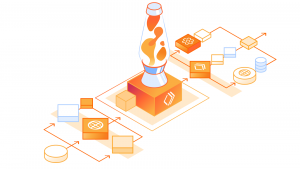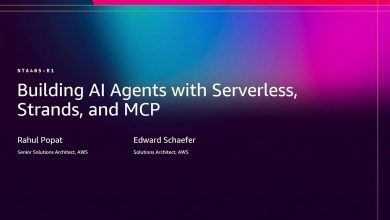Build Internet Scale Ai Apps with Cloudflare
Cloudflare, traditionally known for its content delivery network (CDN) and cybersecurity solutions, has emerged as a powerful platform for creating AI-driven applications.
 In an era where AI is reshaping industries and redefining user experiences, the ability to build scalable, secure, and efficient AI applications is a critical skill for developers.
In an era where AI is reshaping industries and redefining user experiences, the ability to build scalable, secure, and efficient AI applications is a critical skill for developers.
Cloudflare, traditionally known for its content delivery network (CDN) and cybersecurity solutions, has emerged as a powerful platform for creating AI-driven applications.
By combining its global edge network, serverless compute capabilities, and specialized AI tools, Cloudflare empowers developers to deploy intelligent applications that are fast, cost-effective, and secure. This exploration delves into the tools, workflows, and best practices for building AI applications with Cloudflare, offering a comprehensive guide for developers seeking to leverage its ecosystem to create innovative solutions.
Workers AI – Internet AI Infrastructure
Cloudflare’s infrastructure provides unique advantages for AI development. Its edge network, spanning over 330 data centers worldwide, ensures low-latency processing by executing computations close to end users.
This is particularly valuable for AI applications, where real-time inference can significantly enhance user experience. At the heart of Cloudflare’s AI offerings is Workers AI, a serverless platform designed to run machine learning models without the burden of managing infrastructure.
Whether generating text, creating images, or producing embeddings for natural language processing, Workers AI simplifies model deployment and enables seamless integration with other Cloudflare services.
 Complementing this is Cloudflare Workers, a serverless compute environment that scales automatically to handle varying workloads, making it ideal for building the backend logic of AI applications.
Complementing this is Cloudflare Workers, a serverless compute environment that scales automatically to handle varying workloads, making it ideal for building the backend logic of AI applications.
Together, these tools form a robust foundation for creating applications that are both performant and resilient.
Beyond Compute
Beyond compute, Cloudflare provides additional components that enhance AI application development.
Cloudflare R2, an object storage solution, offers a cost-efficient way to store datasets, model weights, or application assets, integrating seamlessly with Workers for efficient data access. For front-end development, Cloudflare Pages enables hosting of static websites or single-page applications, providing a user-friendly interface for AI-driven features.
Durable Objects, another key component, offer stateful storage for managing session data or caching model outputs, which is essential for applications requiring persistent state, such as collaborative AI tools. These components, combined with Cloudflare’s built-in security features like DDoS protection and Web Application Firewall (WAF), create a holistic environment for building end-to-end AI solutions.
The journey of building an AI application with Cloudflare begins with setting up a development environment using tools like Wrangler, Cloudflare’s command-line interface. Developers can initialize serverless projects, configure Workers AI, and deploy models with minimal setup. For instance, creating a text summarization tool involves writing a Worker script to handle HTTP requests, calling a model like Hugging Face’s BART for inference, and deploying it to Cloudflare’s edge.
Ai Apps Optimized for Internet
Integrating a front-end hosted on Cloudflare Pages allows users to interact with the application through a web interface, while R2 can store inputs and outputs for persistence. This workflow exemplifies how Cloudflare streamlines the development process, enabling developers to focus on application logic rather than infrastructure management.
Security and performance are paramount in AI application development, and Cloudflare excels in both. Features like rate limiting, CORS configuration, and API Shield protect applications from abuse while ensuring compatibility with modern web standards.
Developers can optimize latency by leveraging Cloudflare’s edge network, cache frequent AI outputs to reduce costs, and monitor performance through Cloudflare Analytics. Best practices, such as selecting lightweight models, implementing robust error handling, and ensuring compliance with data privacy regulations, further enhance the reliability and efficiency of AI applications.
Multiple AI use cases
The versatility of Cloudflare’s platform supports a wide range of AI use cases. From chatbots powered by text generation models to content moderation systems analyzing user-generated content in real time, Cloudflare enables developers to address diverse challenges. Image processing applications, such as those using Stable
Diffusion for generating visuals, benefit from R2’s storage capabilities, while recommendation systems can leverage embeddings and Durable Objects for personalized experiences. Each use case demonstrates how Cloudflare’s tools can be combined to create tailored solutions that meet specific needs.
While Cloudflare offers immense potential, developers must consider its limitations. Workers AI supports a curated set of models, and compute constraints may require optimization for complex workloads. Cold starts, though minimized, can impact latency for infrequently accessed models, and data privacy regulations demand careful handling of user data.
Despite these challenges, Cloudflare’s ecosystem provides a compelling platform for building AI applications that are scalable, secure, and accessible. By mastering its tools and adopting best practices, developers can unlock the full potential of AI at the edge, delivering innovative solutions that redefine what’s possible in the digital world.



